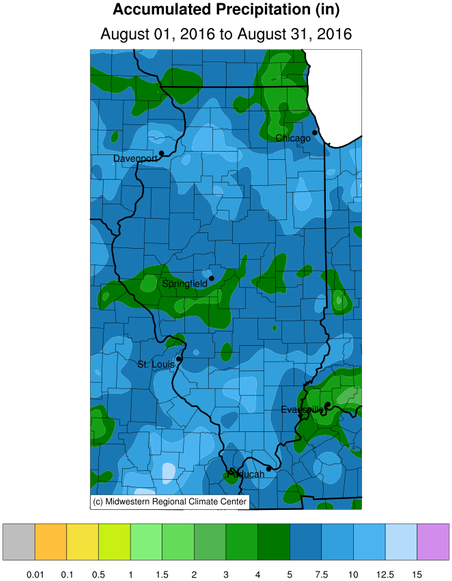It's fascinating how working from home doesn't seem to give me more time to, you know, work. So these have backed up on me, and I hope to read them...someday:
OK, so, that's going to take a few minutes...
It turns out, no one wants to buy ugly big houses in the far suburbs. This apparently comes as a shock to their owners:
The McMansion style, built between 2001 and 2007 and averaging 3,000 to 5,000 square feet, lacks the appeal with today's buyers compared to old vintage homes or large freshly built homes.
The realization is especially hard on homeowners trying to sell because when they bought the giant homes in the early 2000s, they thought of them as great investments, Feinstein said.
Then, the idea was that bigger was better because prices presumably would keep going up.
Now, housing analysts say the day of the McMansion has come and gone. An analysis just completed by Trulia shows that the amount buyers are willing to pay for McMansions over other homes has fallen 26 percent in just four years. As homes in general have been regaining value, McMansions have been losing appeal in comparison to others as the giants of the pre-crash years have aged.
No kidding. And no sympathy from me. Fools, money, etc.
"...people do not relate guns with gun crime."—The American President
And here in Chicago, where we lost more than one lawsuit over our attempts to get guns off the streets, we've had more murders this year than New York and Los Angeles combined. Thirteen people died this weekend alone:
Thirteen people were shot to death in Chicago over the Labor Day weekend as the city logged its 500th homicide of the year.
Thirty-one of the 65 people shot over the long weekend were wounded between 6 a.m. Monday and 3 a.m. Tuesday. Nine of the fatal shootings occurred over that period.
Early Monday morning, it appeared Chicago had a chance of ending a holiday weekend with fewer than four dozen people shot, which would have made it one of the least violent weekends of the summer.
The uptick in shootings in this weekend's final hours mirrored the end of the Fourth of July. Gunfire in the final hours of that holiday made up half the entire weekend's bloodshed.
Police attributed the 11th-hour surge to retaliatory acts, often involving gangs, after a weekend of parties and tense encounters.
Homicides in Chicago this year have risen to levels not seen since the 1990s, when killings peaked at more than 900 annually. The 90 homicides in August tied for the most the city had seen in a single month since June 1996. In the worst previous month — July 1993 — 99 people were slain.
And what is the police union doing right now? Bitching about how they don't want cops wearing cameras all the time, never mind that bad police shootings have cost the city almost half a billion dollars in the past decade, including $210 million since 2012.
Maybe if there were fewer guns? You know? Like in every other civilized country in the world?
On my trip home from Minneapolis a couple of weeks ago, I came across this lovely girl at the MSP airport:

Didn't get to say hi, but ain't she sweet?
From yesterday's Times: you know how global warming is "just a theory?" Not anymore.
The results are in for meteorologcial summer 2016, and it was, in fact, really warm and soggy in Illinois. Chicago's average temperature of 23.5°C was 1.4°C above the 1980-2010 normal. That period was the warmest in history, however, so the summer that just ended Wednesday was Chicago's 18th warmest in recorded history, putting it at the 88th percentile.
Did I mention wet? For June through August, we got 338.8 mm of precipitation, a damp 32.8 mm above normal—not a record, but still very squishy.
Oh, wait—we did hit a record after all. Illinois' statewide average 175.0 mm of precipitation in August, and 349.0 mm for July and August combined, were both the wettest such periods in recorded Illinois history.
Combine the humidity that produced all that precipitation with the above-normal heat and this past summer was uncomfortable.
September, however, has been delightful. The Tribune reports that yesterday Chicago had 100% of its possible sunshine for the first time since June 21st, and we may have an entire weekend—3 days in a row—for the first time since November 10th.
Airways magazine has the heartwarming story of American Airlines MD-80 N9401W heading off to retirement in New Mexico:
This aircraft, and 19 others, were part of a symbolic retirement.
A 20-aircraft order placed by American Airlines to McDonnell Douglas in 1982 marked the beginning of an era in which AA became the world’s largest MD-80 operator, but as the decades passed through and as new and more efficient aircraft joined the fleet, the venerable Mad Dog era is now heading into the sunset.
Once the last AA MD-80 parks in Roswell in 2018, it will close a chapter in the company’s history; yet it will also signify a new era, with the arrival of new Airbus A320 family aircraft and Boeing 737 Next Generation and the coming MAX variant, all part of a major $4.6 billion order placed back in 2010 for 460 aircraft —the largest commercial aircraft order in history at that time.
Millions of miles had unfurled beneath Ship 4WJ, from the Far East where she was built, to freezing Calgary in Canada to the sunny Los Cabos in Mexico, from Los Angeles to Chicago, and then to New York, transporting about 3,700,000 passengers during its career.
Subtracting engines, the current parts market value of an MD-80 varies from $100,000 to $200,000. Once all marketable parts have been harvested, the value of the fuselage carcass ranges between $10,000 and $12,000. It can take a month to part out an MD-80 yet only a few hours to crush it into scrap metal.
While AA retired today 20 MD-80s, the airline’s remaining 61 Mad Dogswill continue flying—safely and reliably transporting their passengers and crews.
I last flew on an MD-80 on 3 December 2014, from Dallas to Chicago.
Two stories, in two directions. First, a cool interactive history of how the construction of Chicago's Eisenhower Expressway (I-290) displaced thousands of people and destroyed thousands of buildings:
In the late 1940s, the Oak Leaves newspaper in Oak Park predicted that the new superhighway would replace the West Side’s “appalling slums” with “orderly dwellings where orderly people are living in health and comfort.”
Of all the neighborhoods that the expressway sliced through, the Near West Side had the largest population of blacks in 1950. Nearly 40 percent of its people were African-American.
In February 1949, city housing coordinator D.E. Macklemann said some people in the neighborhood simply didn’t believe that the highway would actually get built. “One man forced us to get an eviction order from the court because he said he had been reading about superhighways for years and thought the whole thing was a dream,” Macklemann told the Tribune. “In several instances residents paid no attention until the buildings next door were being torn down.”
Second, a report about how Rochester, N.Y., has followed San Francisco, Boston, and other cities in burying or removing highways that blighted or isolated their downtowns:
Rochester lucked out. The eastern quadrant of the Inner Loop was isolated from the main flow of traffic into the city, and thus, the traffic volume on that segment of highway was never particularly high. As a result, discussions about burying this portion of the Inner Loop weren’t sidetracked by circular debates about what to do with the traffic it would displace. It may have taken decades to move forward, but that’s still more progress than many cities can claim.
Our research at the University of Connecticut shows that cities that transformed their downtowns with freeways, parking, and monolithic developments were flooded with traffic even while they were losing jobs and residents. The few American cities that maintained most of their prewar urban fabric saw much less growth in traffic congestion and have retained their character as vibrant walking cities.
We also know that cities that have removed freeways—usually due to an act of nature—have seen a decrease in traffic congestion. In some cases, the decrease was more than 50 percent.
I hope that someday, years from now but in my lifetime, we'll see the Eisenhower buried as well. There have been proposals to do that in Oak Park almost since it was built. But that would require a commitment to livable spaces that the U.S. doesn't seem likely to make.
Today is the 10th anniversary of Parker and me adopting each other.
I can scarcely believe he's lived with me for that long. I mean, this was just yesterday:

And this afternoon, when he was a total brat and refused to sit still, so we went through about 45 frames just to get this one:

That's actually the only one completely in focus without any extraneous dog movements. This was second-best, though at this resolution you can't see that he's not sitting still:

I tell him this often: he's my favorite dog ever. (I think he knows.) But ten years, dog. Ten years. That's more than two lifetimes for most of your species. And I'm glad you've spent it with me.
I love getting an email at 7am because of a production bug. I love it even more when it's pre-release software, still in development and changing almost every day, that the client has decided to demo to a customer.
Parker is happy I'm still home, though he may be left all by himself for a few hours if I have to go into the office anyway.
Real blog entry later if I get a break.